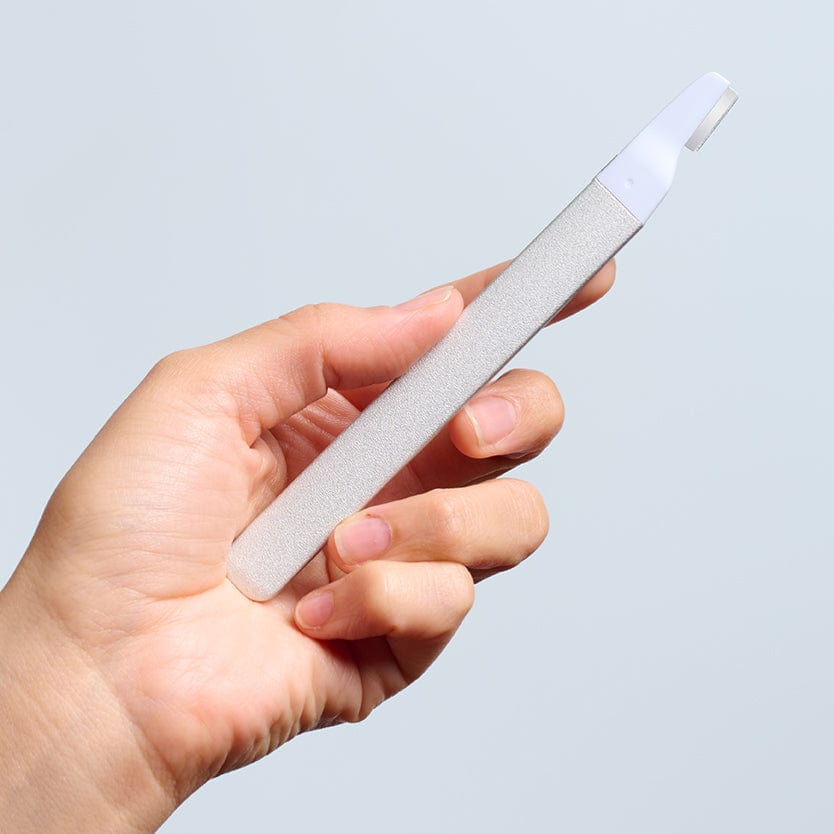Hyperpigmentation: What It Is and How to Treat It
Written by Kerry Benjamin

Dealing with hyperpigmentation can be frustrating and emotional, but it's a common skin concern many people deal with. Simply put, hyperpigmentation is when patches of skin become darker than the surrounding areas due to increased melanin production. This can be caused by various factors such as sun damage, acne scarring, hormonal changes, and more.
There are three types of hyperpigmentation, UV damage, Post Inflammatory hyperpigmentation (PIH), and melasma.
Sun-Induced Hyperpigmentation (UV Damage)
 It is crucial to shield your skin from the sun's hazardous rays to prevent the worsening of hyperpigmentation and the emergence of new spots. Coping with hyperpigmentation caused by UV damage requires time and regularity. The results may not be immediate, but if you remain patient and persistent, you will gradually notice those spots fading away.
It is crucial to shield your skin from the sun's hazardous rays to prevent the worsening of hyperpigmentation and the emergence of new spots. Coping with hyperpigmentation caused by UV damage requires time and regularity. The results may not be immediate, but if you remain patient and persistent, you will gradually notice those spots fading away.
Post-Inflammatory Hyperpigmentation
 PIH happens after a skin injury or trauma, like a breakout or an eczema flare-up. This happens when the body overcompensates during the healing process and produces too much pigment to replace the affected cells. Unlike UV hyperpigmentation and melasma, which can be very deep, this type of hyperpigmentation is generally easier to treat. While PIH often fades with time, treatments like at-home peels, dermaplaning, and microneedling can help it brighten more quickly.
PIH happens after a skin injury or trauma, like a breakout or an eczema flare-up. This happens when the body overcompensates during the healing process and produces too much pigment to replace the affected cells. Unlike UV hyperpigmentation and melasma, which can be very deep, this type of hyperpigmentation is generally easier to treat. While PIH often fades with time, treatments like at-home peels, dermaplaning, and microneedling can help it brighten more quickly.
Melasma
 Unlike other forms of hyperpigmentation, melasma is triggered by hormonal changes and has been nicknamed "pregnancy mask" because it appears on the cheekbones and forehead during or after pregnancy. Various factors, including sun exposure, genetic predisposition, hormone changes, and skin irritation, can cause melasma. It is more prevalent in women, especially pregnant women and those taking oral or patch contraceptives. It is also common among women with PCOS.
Unlike other forms of hyperpigmentation, melasma is triggered by hormonal changes and has been nicknamed "pregnancy mask" because it appears on the cheekbones and forehead during or after pregnancy. Various factors, including sun exposure, genetic predisposition, hormone changes, and skin irritation, can cause melasma. It is more prevalent in women, especially pregnant women and those taking oral or patch contraceptives. It is also common among women with PCOS.
There are ways to treat and reduce hyperpigmentation at home, and I've given you some of my top tips below.
Prevention
The best way to treat any skin condition is to prevent it from occurring in the first place. Since almost all forms of hyperpigmentation are exacerbated by sun exposure, limiting your time in the sun and embracing SPF is essential. Reach for a broad-spectrum sunscreen with UVA/UVB protection of 30 or higher, and re-apply every two hours if you are in the sun. Choose a physical SPF over a chemical one if you can: chemical sun protectants convert UV rays into heat, which can exacerbate melasma.
Exfoliate
Exfoliation is vital to lifting dark spots and can treat most forms of hyperpigmentation, including melasma. Peels are my go-to for a gentle, yet highly effective and safe way to speed cell turnover and exfoliate the skin. Multi-acid peels are especially beneficial because they resurface the skin, brighten, hydrate, reduce inflammation, and prevent melanin production. To enhance the effectiveness of the peel, once a week, before you use your peel, use our DERMAPLANING EXFOLIATION TOOL to physically slough off the top layer of dead skin. By doing this, you are removing the layers of skin to lift the dark spots. Think of this as a constant skin rejuvenation where you are speeding your cell turnover with the peel, then sloughing off that dead skin with the dermaplaning tool to reveal an even tone and texture over time.

Brighten with Serums and Microneedling
As discussed, speeding up cellular turnover can bring pigmented cells to the surface faster, revealing brighter, newer skin underneath. Retinol is the gold standard for anti-aging because it speeds up cell turnover and stimulates collagen. Our Advanced Retinol Serum is a next-generation form of retinol that is a non-irritating retinoid ester. It converts directly into retinoic acid, giving you all the benefits of retinol without dryness and peeling. If your skin is too sensitive for retinol, or if you want to change it up and use a more gentle plant-based retinol alternative to boost cell turnover and speed blemish healing, Epidermal Growth Factors (EGF) are a fantastic ingredient to add to your regimen. EGFs do three main things to help lift dark spots: speed cell turnover, speed healing, and stimulate collagen. EGFs should be applied twice daily, and they can be used on the same nights as retinol, or used on the nights you don't. To make these ingredients more effective, pair them with our MICRONEEDLING TOOL, to drive the active ingredients deeper making them more effective and efficient at lifting hyperpigmentation.

See a Pro
Professional treatments like microdermabrasion, deeper chemical peels, and microneedling with PRP can help target and lift pigmented cells. Laser treatments have also been shown to effectively target hyperpigmentation, but not all lasers work for all skin tones or types of hyperpigmentation. You can consult a licensed dermatologist for help creating a treatment plan tailored to your unique skin needs. Everyone's skin is unique and will respond differently to treatments, so be patient and consistent with your skincare routine. And most importantly, don't forget to love and embrace your skin, hyperpigmentation, and all!
About the Author

Kerry Benjamin, a licensed aesthetician, has over 14 years of experience. Kerry is the driving force behind StackedSkincare. As the company's CEO, Kerry has dedicated her career to revolutionizing skincare. Her innovative approach combines peels, serums, and specialized tools to effectively address a wide range of skin concerns. CA LE license number Z98459.

